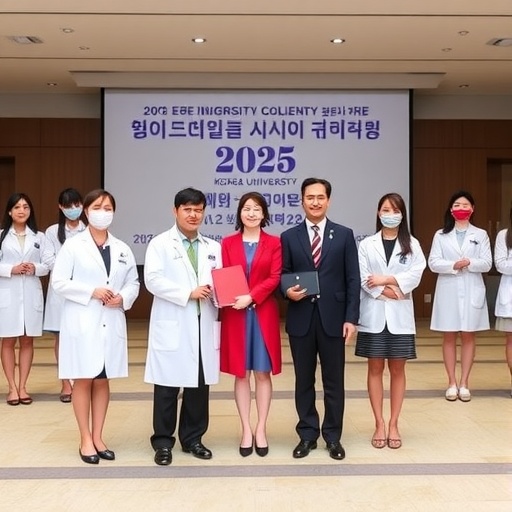In a groundbreaking study led by the Liverpool School of Tropical Medicine (LSTM) in collaboration with the Malawi-Liverpool-Wellcome Programme (MLW), researchers have unveiled striking data on the mortality associated with acute breathlessness among hospitalized patients in Malawi. The research reveals that more than half of those admitted with breathlessness—a condition medically termed dyspnea—succumb within one year of hospitalization, a mortality rate more than double that observed in patients without this symptom. This alarming finding highlights the urgent need for integrated, patient-centered healthcare strategies that address the complex multimorbidity often underlying breathlessness in low-income settings.
Breathlessness in clinical practice often signals an underlying pathology affecting the cardiopulmonary system, but this study emphasizes that patients typically present with multiple concurrent conditions. Diseases like pneumonia, anaemia, heart failure, and tuberculosis (TB) were frequently coexistent among the breathless patient cohort studied. This interplay of pathologies not only complicates diagnosis and treatment but also exacerbates health outcomes, calling into question conventional healthcare models that emphasize siloed disease management.
The cohort study, which tracked 751 adult inpatients over 12 months, identified 334 individuals (44%) presenting with acute breathlessness. Notably, mortality among this subgroup was profoundly high: 69% for those diagnosed with heart failure, 57% with anaemia, 53% with pneumonia, and 47% with TB. The prevalence of multimorbidity was noteworthy, affecting 63% of patients and serving as a potent prognostic indicator for mortality. These statistics starkly contrast with data from high-income countries where, despite older populations, breathlessness-related mortality is significantly lower.
Dr. Stephen Spencer, the lead author and a Wellcome Trust Clinical PhD Fellow at LSTM and MLW, underscored the paradox presented by these findings. Despite Africa’s generally younger demographic profile, the mortality associated with breathlessness in Malawi far exceeds that reported in Europe. He attributes this disparity to the overlapping burdens of infectious and non-communicable diseases alongside limited healthcare infrastructure. The progress made since 2020 in expanding oxygen availability, spurred by the COVID-19 pandemic, provides a critical care foundation. However, it is insufficient in isolation to lower the staggering death rates linked to breathlessness.
A key insight from the study is the inadequacy of traditional healthcare delivery models that isolate and treat individual diseases without recognition of their coexistence. This vertical approach often neglects the clinical reality of multimorbidity. For patients simultaneously battling anemia, pneumonia, and heart failure, piecemeal treatments fail to address the cumulative physiological stress responsible for breathlessness and poor outcomes. Thus, an urgent shift toward comprehensive, patient-centered care models capable of diagnosing and managing multiple illnesses in tandem is warranted.
From a clinical and public health perspective, the study provides pivotal evidence supporting enhancements in diagnostic acumen and resource allocation. Dr. Ben Morton, Senior Clinical Lecturer at LSTM and senior author, emphasized the complexity of the breathlessness syndrome in sub-Saharan Africa and the need for holistic health strategies. While vertical programs targeting TB and other single diseases have yielded improvements, their limitations are exposed by the high mortality rates revealed. Integrated clinical pathways that accommodate diagnostic overlap and multimorbidity could revolutionize care delivery.
Additionally, the co-investigator Dr. Felix Limbani called attention to the necessity of scaling up respiratory support capacity within healthcare systems operating under resource constraints. Medical oxygen availability and workforce training in recognising and managing multimorbid breathlessness are cornerstone interventions that may translate into improved patient survival and quality of life. His comments imply that multifaceted system-level solutions must accompany clinical advances to be truly transformative.
The study leveraged a multi-institutional partnership involving not only Malawian institutions such as Kamuzu University of Health Sciences and the Malawi Liverpool Wellcome Programme but also Tanzanian centers like Kilimanjaro Christian Medical Centre and Muhimbili University of Health and Allied Sciences. Additionally, established UK institutions, including the Royal United Hospitals Bath NHS Foundation Trust, Liverpool John Moores University, the University of Manchester, and the University of Edinburgh, contributed, reflecting the global collaborative effort required to address this pressing health challenge.
Published in the prestigious journal Thorax, this research adds a critical dimension to understanding the burden of respiratory symptoms in low-income countries burdened by infectious and non-communicable diseases alike. It provides quantitative evidence that breathlessness is not simply a symptom but a marker of severe underlying pathology, often involving multiple organ systems and necessitating intricate management strategies.
Beyond the direct clinical implications, the study serves as a clarion call for policymakers and global health stakeholders to re-examine resource prioritization. Investments in oxygen infrastructure, training programs focusing on respiratory medicine and multimorbidity, and development of integrated care models tailored to the epidemiological realities of African health systems could catalyze reductions in preventable mortality.
Furthermore, the study’s findings emphasize that the COVID-19 pandemic’s legacy in sub-Saharan Africa should transcend emergency response and fuel long-term health system strengthening. Oxygen supply systems, for instance, though expanded hastily due to pandemic demands, must now be entrenched as core components of sustainable clinical care for respiratory diseases beyond SARS-CoV-2 infections.
In conclusion, this pivotal research unravels layers of complexity underpinning acute breathlessness in Malawi and reveals unacceptably high mortality rates that reflect broader systemic healthcare challenges. The data underscore the exigency of transitioning from fragmented, disease-specific programs to integrated, patient-centered care models equipped to tackle multimorbidity. Only through such comprehensive strategies can meaningful improvements be achieved, mitigating the toll of breathlessness and its underlying causes in resource-limited settings.
Subject of Research: People
Article Title: Acute breathlessness as a cause of hospitalisation in Malawi: a prospective, patient-centred study to evaluate causes and outcomes
News Publication Date: 11-Sep-2025
Web References:
10.1136/thorax-2025-223623
Keywords: Clinical medicine, Respiratory disease, Multimorbidity, Acute breathlessness, Malawi, Sub-Saharan Africa, Tuberculosis, Pneumonia, Heart failure, Anaemia, Health systems, Oxygen therapy




